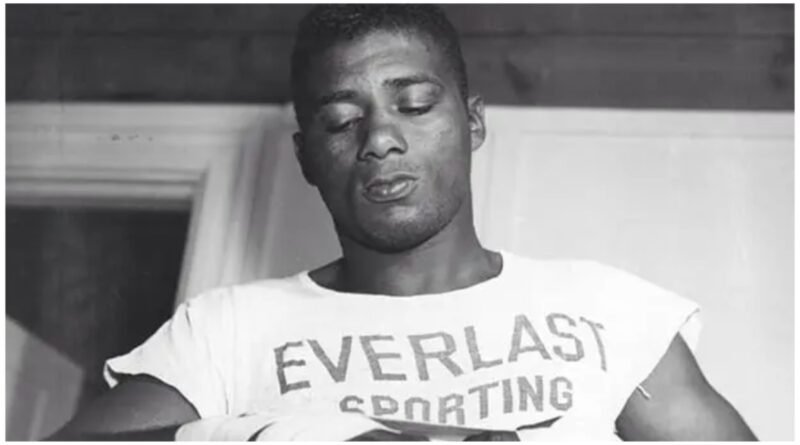The Legacy of Floyd Patterson: A Champion Inside and Outside the Ring
Emerging from the humble beginnings of a small town in Waco, North Carolina, on January 4, 1935, Patterson’s early life was framed by the challenges of growing up in a large family struggling with poverty. As one of eleven children, his early years were a fight for survival and a quest for identity and purpose amidst adversity.
The move to Brooklyn, New York, made a difference in Patterson’s life, where the harsh realities of urban life led him down a path of truancy and petty crimes. However, his enrollment at the Wiltwyck School for Boys ignited a transformative spark within him. The reform school, nestled in West Park, New York, became the crucible for Patterson’s metamorphosis, offering him a chance to redirect his energies and focus toward a more constructive pursuit.During his tenure at Wiltwyck, Patterson discovered his talent in sports, a talent that would later become the cornerstone of his legacy. The discipline, structure, and sense of belonging he found there laid the groundwork for his remarkable journey in the world of boxing. At the tender age of fourteen, Patterson ventured into the boxing ring, honing his skills at the Bedford-Stuyvesant Boxing Association Gym. His dedication to his craft was rewarded three years later when he clinched the gold medal in the middleweight category at the 1952 Helsinki Olympics. This victory was both a personal triumph and a national accolade.
Patterson’s amateur career was nothing short of stellar, boasting an impressive record of 40 wins, with 37 of those victories coming by way of knockout, against a mere four defeats. His unique fighting stance, characterized by his hands held high in front of his face—affectionately dubbed the “peek-a-boo” stance by sportswriters—became his signature in the ring. A Pioneering ChampionCrowned the youngest heavyweight champion at age 21 in 1956, a record that stood until Mike Tyson’s emergence, Patterson’s achievement was a harbinger of his groundbreaking career. His remarkable comeback to reclaim the heavyweight title after a defeat to Ingemar Johansson in 1959 etched his name in history as the first boxer to regain the world heavyweight championship.Triumphs and TribulationsFloyd Patterson’s remarkable journey through the peaks and valleys of professional boxing is a tale that resonates beyond the confines of sport. His trilogy with Ingemar Johansson captivated the world with its dramatic shifts in fortune and showcased Patterson’s indomitable will and resilience. Initially facing a devastating defeat to Johansson in 1959, Patterson was knocked down seven times before the fight was halted, marking a significant setback in his career. However, this loss set the stage for a remarkable comeback. In their second encounter in 1960, Patterson reclaimed his title with a stunning fifth-round knockout, demonstrating his prowess as a fighter and his strategic acumen and heart. The historic victory made Patterson the first boxer ever to regain the world’s heavyweight championship. The rubber match in 1961 further solidified Patterson’s legacy, as he overcame being knocked down twice to secure a victory by knockout in the sixth round.Yet, Patterson’s career was also marked by significant challenges, particularly his bouts against Sonny Liston and Muhammad Ali. The matches against Liston in the early 1960s were a stark contrast to Patterson’s earlier triumphs. Liston’s formidable size and power overwhelmed Patterson, leading to first-round knockouts in both 1962 and their 1963 rematch. These defeats were physical setbacks and moments of profound personal and public scrutiny for Patterson, who was known for his gentle demeanor outside the ring. The highly anticipated fight against Muhammad Ali in 1965 further highlighted the brutal realities of boxing. Despite Patterson’s efforts, Ali’s prowess led to a technical knockout in the twelfth round. These encounters, especially with Ali, were imbued with societal and political undertones, reflecting the complex interplay between sports, identity, and activism during the 1960s.Moreover, boxing fans still watch his fights on social channels, and he is a star for North Carolina fans. With the legalization of sports betting in North Carolina, fans can take part in betting on boxing. Additionally, they can use the bet365 North Carolina bonus code while placing bets on boxing. Humanitarian and AdvocateBeyond his boxing accolades, Patterson’s contributions off the ring illuminated his character and values. His visit to Vietnam in 1967, where he extended compassion and empathy to injured Marines, highlighted his humanitarian spirit. A poignant moment recounted involves Patterson comforting a severely wounded Marine, showing his profound humanity and compassion. Furthermore, Patterson’s advocacy for civil rights and his stance against the Vietnam War, particularly in defense of Muhammad Ali’s conscientious objection, showcased his commitment to principles that transcended sports.Legacy and InfluencePatterson’s legacy is not solely encapsulated by his achievements in the ring but also by his impact on society and the boxing community. His gentle demeanor and ferocious competitiveness have inspired generations of athletes to embody sportsmanship and integrity. His life story, characterized by overcoming adversity, advocating for social justice, and demonstrating compassion, continues to resonate, making him a figure of enduring significance in the sports world and beyond.Final WordsFloyd Patterson’s journey from a troubled youth to a world champion and a champion of the people illustrates an individual’s profound impact in their chosen field and the broader societal context. His legacy, marked by historic boxing triumphs and a steadfast commitment to humanitarian causes, serves as a beacon for future generations, underscoring his indelible mark on the world, both inside and outside the ring.





